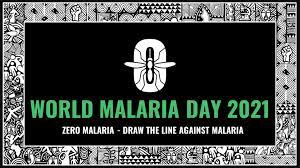World Hearing Day 2023 (3 March)
Theme:
Ear and hearing care for all!
Let’s make it a reality
World Hearing Day 2023 will highlight the importance of integrating ear and hearing care within primary care, as an essential component of universal health coverage
Key messages
- Ear and hearing problems are among the most common problems encountered in the community.
- Over 60% of these can be identified and addressed at the primary level of care.
- Integration of ear and hearing care into primary care services is possible through training and capacity building at this level.
- Such integration will benefit people and help countries move towards the goal of universal health coverage.

Deafness and hearing loss
Key facts
- By 2050 nearly 2.5 billion people are projected to have some degree of hearing loss and at least 700 million will require hearing rehabilitation.
- Over 1 billion young adults are at risk of permanent, avoidable hearing loss due to unsafe listening practices.
- An annual additional investment of less than US$ 1.40 per person is needed to scale up ear and hearing care services globally.
- Over a 10-year period, this promises a return of nearly US$ 16 for every US dollar invested.
Overview
Over 5% of the world’s population – or 430 million people – require rehabilitation to address their disabling hearing loss (432 million adults and 34 million children). It is estimated that by 2050 over 700 million people – or 1 in every 10 people – will have disabling hearing loss.
‘Disabling’ hearing loss refers to hearing loss greater than 35 decibels (dB) in the better hearing ear. Nearly 80% of people with disabling hearing loss live in low- and middle-income countries. The prevalence of hearing loss increases with age, among those older than 60 years, over 25% are affected by disabling hearing loss.
Hearing loss and deafness
A person who is not able to hear as well as someone with normal hearing – hearing thresholds of 20 dB or better in both ears – is said to have hearing loss. Hearing loss may be mild, moderate, severe, or profound. It can affect one ear or both ears and leads to difficulty in hearing conversational speech or loud sounds.
‘Hard of hearing’ refers to people with hearing loss ranging from mild to severe. People who are hard of hearing usually communicate through spoken language and can benefit from hearing aids, cochlear implants, and other assistive devices as well as captioning.
‘Deaf’ people mostly have profound hearing loss, which implies very little or no hearing. They often use sign language for communication.
Causes of hearing loss and deafness
Although these factors can be encountered at different periods across the life span, individuals are most susceptible to their effects during critical periods in life.
Prenatal period
- genetic factors including hereditary and non-hereditary hearing loss
- intrauterine infections – such as rubella and cytomegalovirus infection.
Perinatal period
- birth asphyxia (a lack of oxygen at the time of birth
- hyperbilirubinemia (severe jaundice in the neonatal period)
- low-birth weight
- other perinatal morbidities and their management.
Childhood and adolescence
- chronic ear infections (chronic suppurative otitis media)
- collection of fluid in the ear (chronic nonsuppurative otitis media)
- meningitis and other infections.
Adulthood and older age
- chronic diseases
- smoking
- otosclerosis
- age-related sensorineural degeneration
- sudden sensorineural hearing loss.
Factors across the life span
- cerumen impaction (impacted ear wax)
- trauma to the ear or head
- loud noise/loud sounds
- ototoxic medicines
- work related ototoxic chemicals
- nutritional deficiencies
- viral infections and other ear conditions
- delayed onset or progressive genetic hearing loss.
The impact of unaddressed hearing loss
When unaddressed, hearing loss impacts many aspects of life at individual level:
- communication and speech
- cognition
- education and employment: In developing countries, children with hearing loss and deafness often do not receive schooling. Adults with hearing loss also have a much higher unemployment rate. Among those who are employed, a higher percentage of people with hearing loss are in the lower grades of employment compared with the general workforce.
- social isolation, loneliness and stigma
- impact on society and economy
- effects on years lived with disability (YDLs) and disability adjusted life years (DALYs).
WHO estimates that unaddressed hearing loss poses an annual global cost of US$ 980 billion. This includes health sector costs (excluding the cost of hearing devices), costs of educational support, loss of productivity, and societal costs. Of these costs, 57% are attributed to low- and middle-income countries.
Prevention
Many of the causes that lead to hearing loss can be avoided through public health strategies and clinical interventions implemented across the life course.
Prevention of hearing loss is essential throughout the life course, from prenatal and perinatal periods to older age. In children, nearly 60% of hearing loss is due to avoidable causes that can be prevented through implementation of public health measures. Likewise, most common causes of hearing loss in adults, such as exposure to loud sounds and ototoxic medicines, are preventable.
Effective strategies for reducing hearing loss at different stages of the life course include:
- immunization;
- good maternal and childcare practices;
- genetic counselling;
- identification and management of common ear conditions;
- occupational hearing conservation programmes for noise and chemical exposure;
- safe listening strategies for the reduction of exposure to loud sounds in recreational settings; and
- rational use of medicines to prevent ototoxic hearing loss.
Identification and management
Early identification of hearing loss and ear diseases is key to effective management.
This requires systematic screening for detection of hearing loss and related ear diseases in those who are most at risk. This includes:
- newborn babies and infants
- pre-school and school-age children
- people exposed to noise or chemicals at work
- people receiving ototoxic medicines
- older adults.
Hearing assessment and ear examination can be conducted in clinical and community settings. Tools such as the WHO “hearWHO” app and other technology-based solutions make it possible to screen for ear diseases and hearing loss with limited training and resources.
Once hearing loss is identified, it is essential that it is addressed as early as possible and in an appropriate manner, to mitigate any adverse impact.
Measures available to rehabilitate people with hearing loss include:
- the use of hearing technologies, such as hearing aids, cochlear implants and middle ear implants;
- the use of sign language and other means of sensory substitution, such as speech reading, use of print on palm or Tadoma, signed communication; and
- rehabilitative therapy to enhance perceptive skills and develop communication and linguistic abilities.
The use of hearing assistive technology, and services such as frequency modulation and loop systems, alerting devices, telecommunication devices, captioning services and sign language interpretation, can further improve access to communication and education for people with hearing loss.

Making listening safe
Over one billion people are at risk of hearing damage due to unsafe recreational listening practices. To combat these risks WHO created the Make Listening Safe initiative in 2015.
“Make listening safe” aims to realize a world where people of all ages can enjoy recreational listening without risk to their hearing.
The approach of this initiative is to change listening practices and behaviours. WHO aims to achieve this through:
- raised awareness about the need for and means of safe listening, and
- implementation of evidence-based standards that can facilitate behaviour change in target population groups.
The Make Listening Safe mission is performed via three main pillars, developed and carried out through in collaboration with all stakeholders in the field.
Creation of evidence-based standards
WHO creates standards that outline safe listening features for a variety of situations where unsafe practices are common. These include:
- the WHO-ITU Global standard for Safe listening devices and systems
- the Global standard for safe listening venues and events
- WHO offers support to its Member States, private sector entities, and civil society in adoption and implementation of these standards.
Increasing awareness
WHO develops and disseminates evidence-based awareness materials for safe listening. These include:
Investing in research
Research into safe listening is performed in collaboration with our global partners to better understand the current state of affairs, to ensure WHO leverages current best practices around the globe, and to uncover future need of safe listening interventions.
Download Here
This manual is a practical guide on the prevention, identification, and management of hearing loss and common ear diseases that lead to hearing loss. It is intended mainly for health workers and doctors who work at primary care level and provide services to people either at health facilities or in communities.
It is intended to be administered by a trainer/instructor familiar with ear and hearing problems, their assessment and management, and is accompanied by a trainer’s handbook. The manual comprises a series of stand-alone modules.
Primary ear and hearing care: training manual












